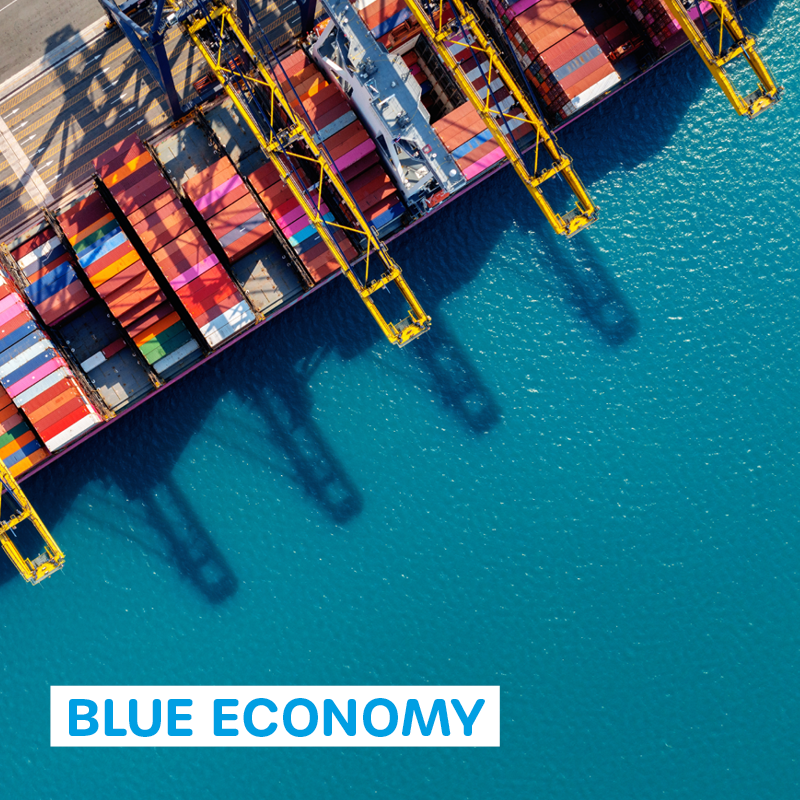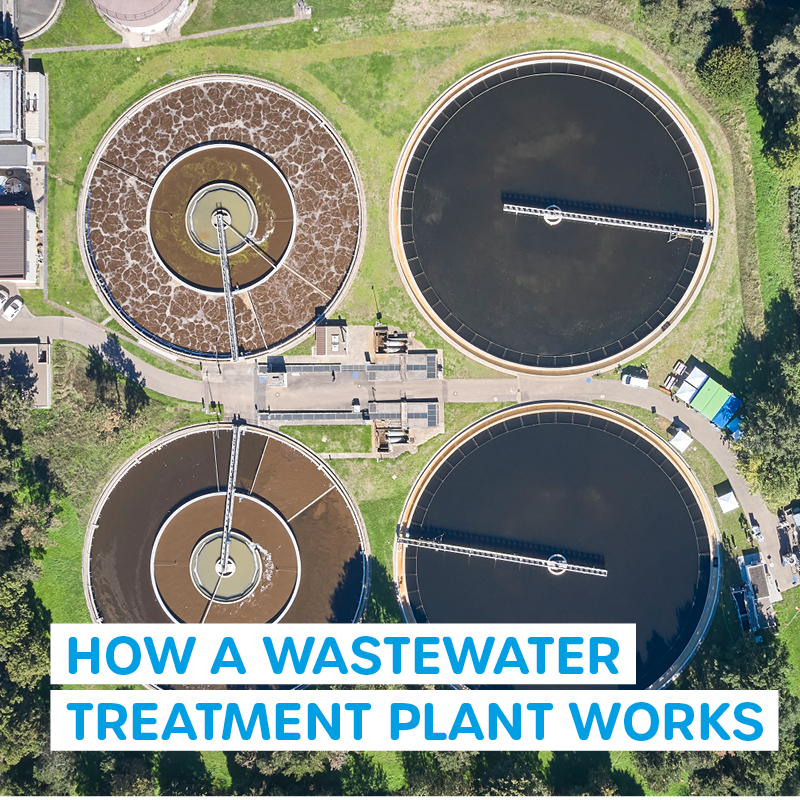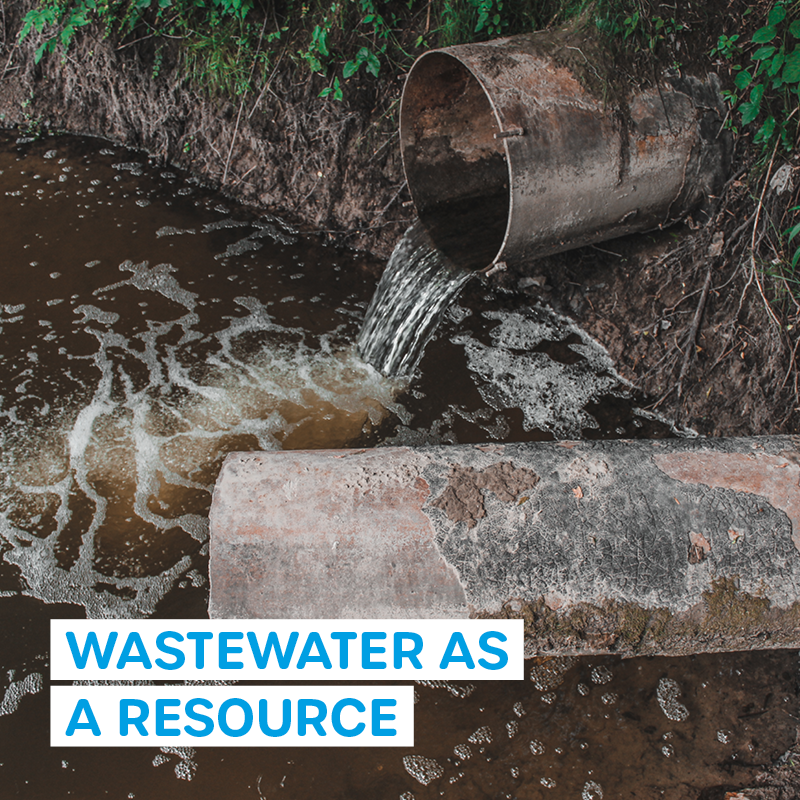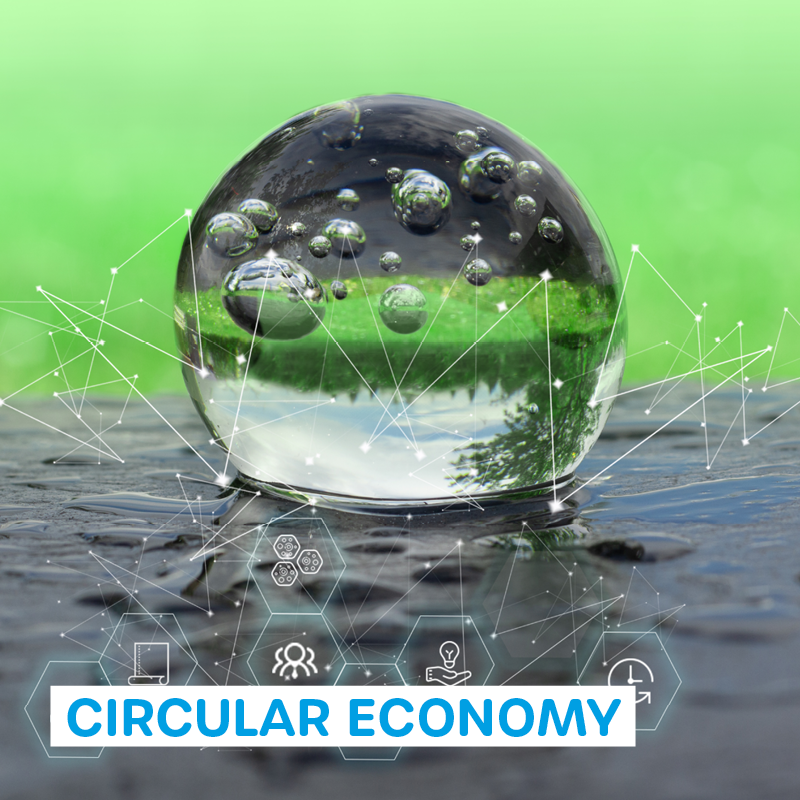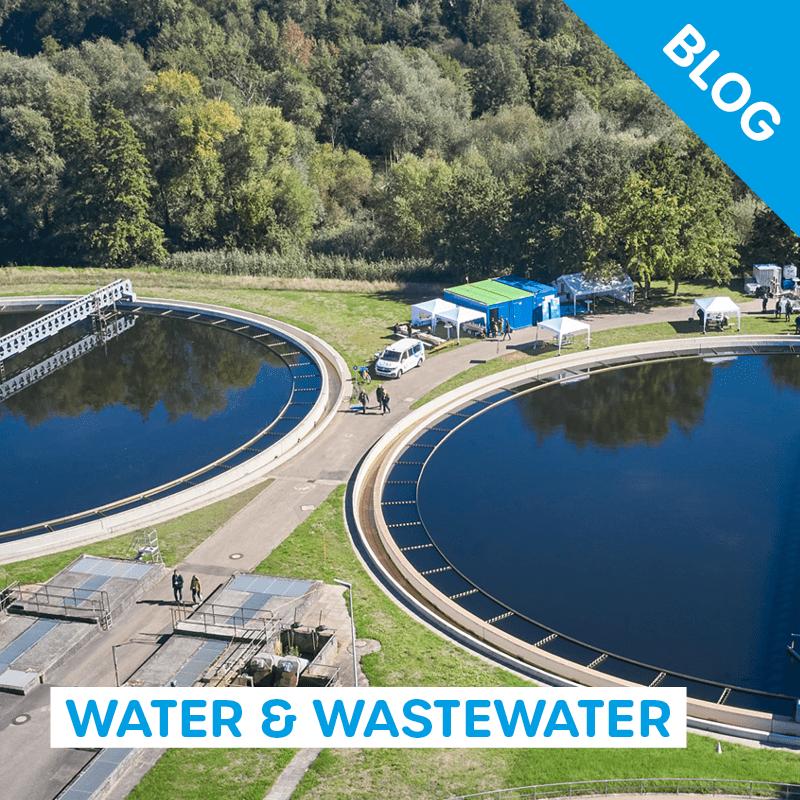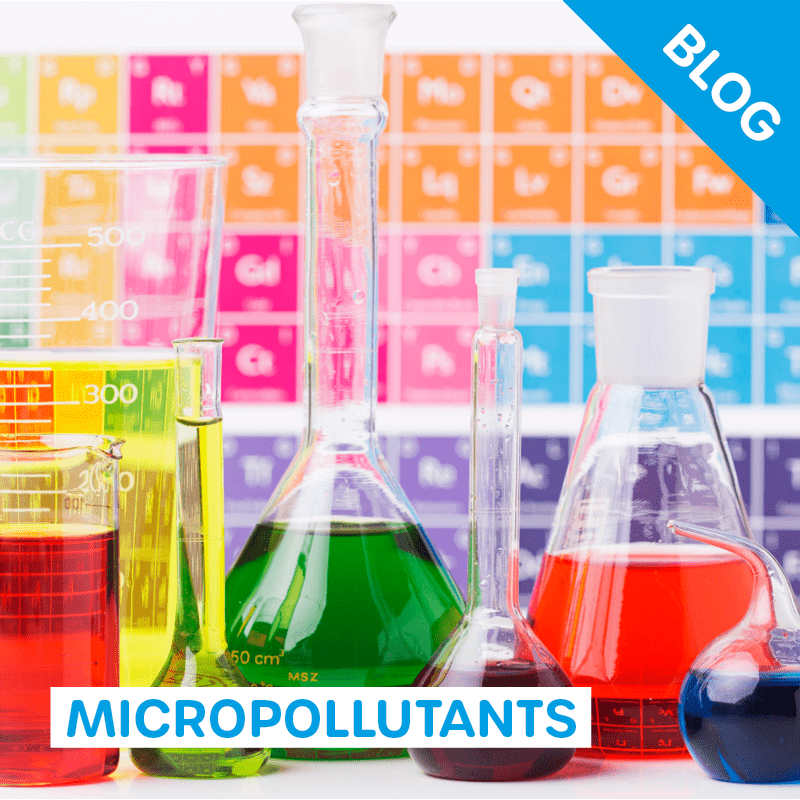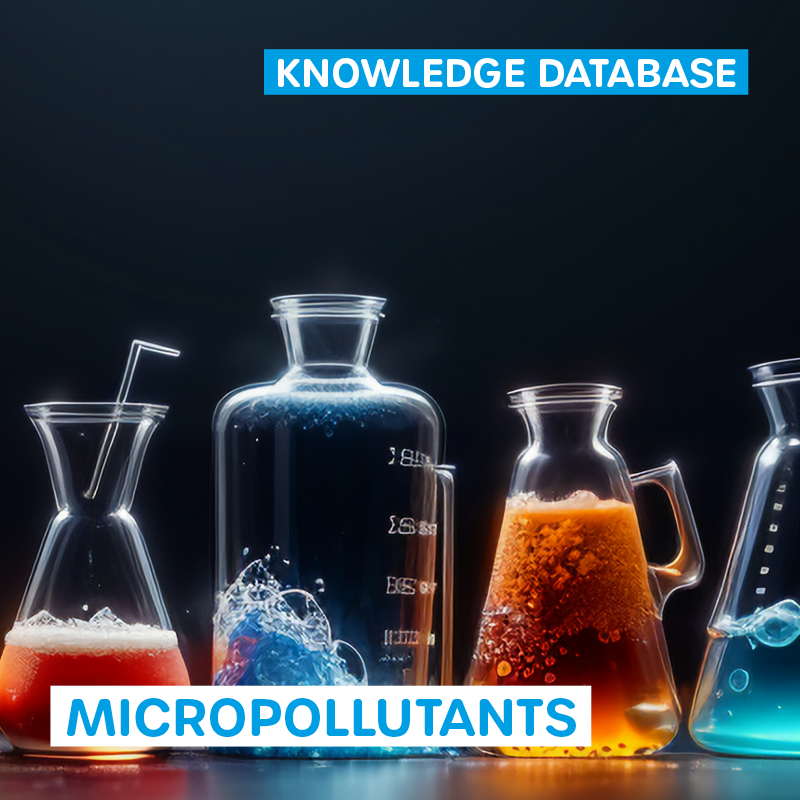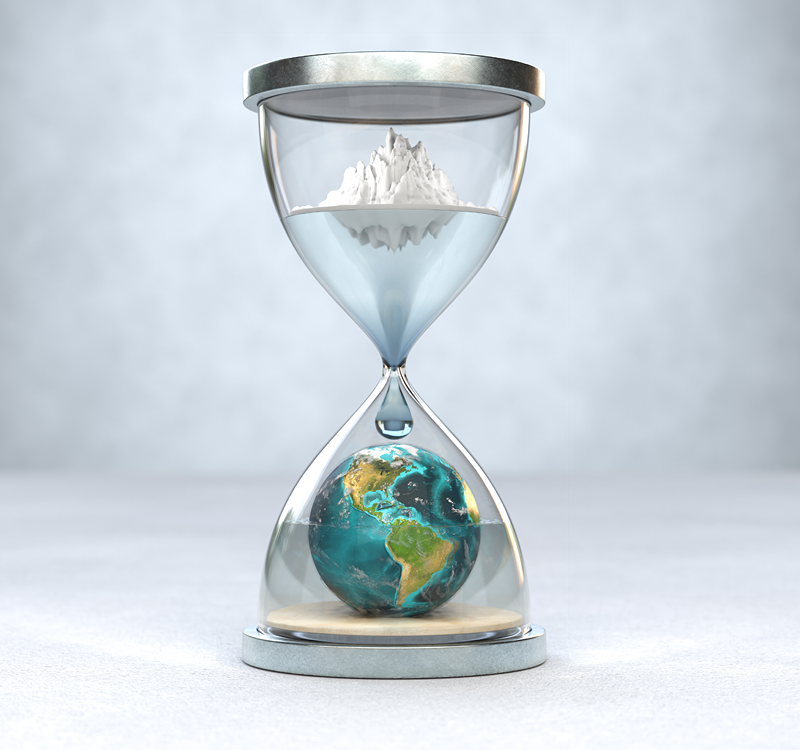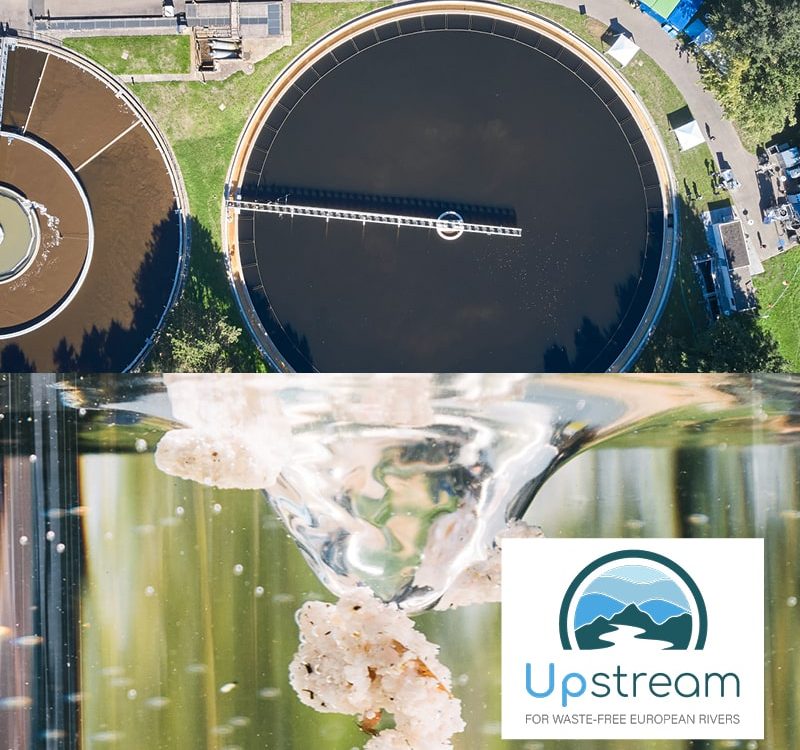
Water and Wastewater
4 facts to get started
Approximately 72 percent of the earth's surface is covered by water, of which 97 percent is seawater. Seawater varies greatly from place to place in terms of its salinity alone. In the area of river estuaries, brackish water, i.e., the mixture of salt and fresh water, has its own conditions.
This means that only 3 percent of the global water supply is freshwater. Of this three percent, approximately 69.5 percent is bound up in polar ice, glaciers or snow cover and is therefore inaccessible to humans. 30.1 percent of freshwater is groundwater, 0.4 percent is surface water.
Our body consists of 2/3 water when we are young. Later, still half of it. Animals and plants consist to a large extent of water. Water is the main component of many of our foods. Agriculture and industry also consume enormous amounts of water every day. Be it human metabolism, photosynthesis of plants, weather or climate - the basic conditions of all life on this planet are based on and influenced by water.
The basic chemical compound of water (H2O) consists of the elements oxygen (O) and hydrogen (H). However, minerals, trace elements and various other substances are also found in water. Water can be distinguished on the basis of physical, chemical, electrical and optical properties. These include, for example, electrical conductivity, solid and gas content, pH value or water hardness. These parameters vary for different types of water depending on location and time as well as cleaning and treatment processes used.
Water cycle
The term water cycle describes the transport and storage of water. The water changes its state of aggregation during this process, so water is never lost.
Water from oceans, rivers and lakes evaporates and rises into the atmosphere as water vapor. The resulting humidity is transported to the mainland by the wind. When the moist air encounters cold layers of air, it pushes over them and rises, as it does when it encounters mountain slopes or is warmed over warm ground. As the air rises, it cools. However, cold air can absorb less water vapor than warmer air, so the water vapor contained in the air condenses above a certain altitude. Clouds are formed in the process. If the water droplets become large enough, precipitation occurs. The water falls back to earth in the form of rain, snow or hail. There, the water collects and then flows back into the sea via rivers and streams.
Water types
Es gibt viele unterschiedliche Wasserarten. Auf die wichtigsten gehen wir in den nachfolgenden Unterpunkten ein.
Water quality
Water quality can be considered a measure of the suitability of water for a particular use based on selected physical, chemical, and biological properties.
In order to assess the water quality or the , various analytical tests are usually carried out. These include the determination of the chemical oxygen demand (COD) or biological oxygen demand (BOD) as well as pH, turbidity, conductivity, water hardness, total nitrogen and total phosphorus.
These basic analyses give a first impression, but not comprehensive insights. In order to be able to make a fully comprehensive statement on water quality, further investigations (including analysis for micropollutants, microplastics), but also classifications of the values with regard to the environmental quality standards must be carried out.
A distinction is made between chemical and ecological status. For the chemical status, the environmental quality standards are used; for the ecological status, the Water Framework Directive serves as the basis in Germany and the EU.
Water scarcity
The current situation is that in most industrialized countries there is hardly any water scarcity, hygiene conditions are excellent, and industries in the field of water conservation and water purification do what the state imposes on them. There is hardly any voluntary commitment to protect the environment, and it does not look as if the community of states will turn this screw in an impact-oriented way in the next few years. Unless the pressures continue to increase in such a way that the effects on the ecosystem reach people more and more, become visible and tangible. At the latest then the social pressure will be so high and lead to decisions that really protect the water and our planet.
In the countries of the Global South, the effects of water pollution and water scarcity are already very visible.
Since 2000, the world's population has grown by more than 1 billion people to its current 7.3 billion. Over the same period, global water demand has increased by about 20 percent. The situation is exacerbated by the further increase in global water demand forecast by 2050 of an additional 55 percent and the associated increase in conflicts over its use.
The overuse of global water resources is already shaping the face of the earth today. Water shortages not only have consequences for individuals, ecosystems and economic development. Insufficient basic water supply is also a factor that can weaken the stability of political systems. https://wasserdreinull.de/blog/wasser-menschenrecht-oder-wirtschaftsgut/ By 2050, 40 percent of the world's population is expected to live in areas of water stress.
The increasing amount of problematic ingredients in combination with water scarcity creates a volatile mix. The question of whether water is a human right or economic good is only one of many when it comes to protecting our environment and ourselves as human beings.
Impact of water scarcity
Worldwide, around 1.2 billion people are at risk of extreme water scarcity and around 748 million people have no access to clean drinking water. However, the number of those who have to live without basic sanitation, i.e., they have neither a toilet nor a connection to wastewater disposal, is more than twice as high at 2.5 billion. The consequences of this for the people affected themselves, but also for the economic and ecological development of their home countries, are enormous.
Cities in the Global South are particularly affected. In these cities, water consumption and pollution levels are particularly high, as is the volume of wastewater produced. Often, there is a lack of adequate infrastructure for wastewater disposal and treatment, so that the inhabitants of these cities usually only have access to dirty water. A reliable drinking water supply and efficient wastewater disposal go hand in hand. This is also reflected in Goal 6 of the UN Sustainable Development Goals Clean Water and Sanitation.
Virtual water
The term 'virtual water' describes the amount of water used to manufacture a product – whether industrial or agricultural.
For example, about 16,000 liters of water are used to produce one kilogram of beef. In addition to the water used to water the animals, the water used to grow feed for the animals is also included in the calculation.
Calculating virtual water consumption, we use just under 4,000 liters of water per day at our latitudes. For the average daily needs for basic hygiene, cooking, drinking, we need about 125 liters of "visible" water.
Blue Economy
Our oceans are not only the largest ecosystem in the world, but also a huge economic system - a blue economy. The need for more sustainability in this area can no longer be denied. Not least because the oceans and seas need to be in good ecological and chemical condition in order to realise their economic - and social - potential.
Water pollution
While in Africa and other developing countries the contamination of water with pathogens is (still) the greatest danger (sewage, infectious diseases), in European and other industrialized countries the pollution of water with chemicals is the main problem. Very present in the media is the pollution of water by pharmaceuticals, per- and polyfluorinated substances, organic phosphorus compounds, nitrate and microplastic.
Until now, it was mainly still insufficient analytical methods that told us little or nothing about the actual levels of pollution. With the expansion of municipal wastewater treatment plants to three stages (mechanical, biological and chemical), it was thought that the cocktail of pollutants could be brought under control.
But as it turns out today, there are many more factors to consider, as well as the concentrations of problematic constituents and their complexity in terms of removal and also behavior in the environment are continuously increasing.
Improved analytics prove it. It is not only the supposedly high concentrations (e.g. phosphates) that have to be removed in the wastewater treatment plant in order to curb eutrophication (tipping of water bodies), but the micropollutants, the smallest quantities, that are causing us more and more problems because they are often more toxic and dangerous.
Wastewater treatment plants
In 2013, Germany's wastewater volume amounted to around 9.8 billion cubic meters and consisted mainly of sewage, extraneous water and precipitation. The pure wastewater from private households, commerce and industry already corresponds to around 50% of the total volume of wastewater fed to municipal wastewater treatment plants. The remaining approximately 50% is made up of almost equal parts precipitation and external water.
The wastewater treatment process takes place in the wastewater treatment plant. In most wastewater treatment plants in Germany, this consists of three treatment stages: mechanical, biological and chemical. After these have been passed through, the treated wastewater is discharged into the natural water cycle, e.g. into the nearby watercourse, the so-called receiving water.
It has been known for some years that there are wastewater constituents which can only be removed to a minor extent or not at all during wastewater treatment in the wastewater treatment plant. We are talking about anthropogenic trace substances (or micropollutants) and microplastic.
Environmental Quality Standards
The classification of the chemical status of a surface water body is based on the Environmental Quality Standards regulated in the Surface Water Ordinance (current SWO of 20-Jun-2016). The EQS or environmental quality standard represents the concentration of a specific pollutant or group of pollutants that must not be exceeded in water, suspended solids, sediments or biota (fish, shellfish) for reasons of health and nature protection.
Currently, 45 priority substances or substance groups are included in the assessment. These include metals, pesticides and other chemicals. If the EQS is exceeded for one of the substances or substance groups, the chemical status for this surface water body is already classified as "not good".
Water Framework Directive
The Water Framework Directive (WFD) describes measures for integrated water protection policy. It was launched in the European Community on December 22, 2000 with the date of publication in the Official Journal. With the approach of integrated water protection policy in Europe, which also goes beyond state and national borders, the community of states wants to achieve a coordinated management of the waters within the river basins.
The classification of the concept of ecological status or potential of rivers, lakes, transitional and coastal waters, which is anchored in the WFD, is carried out via so-called biological quality elements of the aquatic flora and fauna. The fish, invertebrates, macrophytes or phytoplankton living in the water are good indicators to make statements about the quality of the water bodies. For all organism groups, the species composition and species abundance are therefore recorded and evaluated, for fish additionally the age structure of the biocoenosis and for phytoplankton the biomass.
Fourth purification step in wastewater treatment plants
The requirements for a fourth treatment step for central wastewater treatment are complex. On the one hand, the treatment step must be able to remove a wide range of problematic substances to a large extent; on the other hand, it is also important to avoid undesirable by-products, for example those resulting from chemical or biological transformations, or to make them manageable for the wastewater treatment plant operator.
In addition, the fourth cleaning step must be easy to operate for trained personnel and must be integrable into an existing plant. An appropriate, justifiable, cost/benefit factor must be taken as a basis.
At the present time, various processes are available as a fourth purification step for the removal of pollutants. Based on their respective mechanisms of action, these can be divided into adsorptive, oxidative, biological and physical.
All processes can be combined with each other, but it must be taken into account that each of them, considered individually, has limiting factors that cannot be completely eliminated even by combining two process approaches. Often, the process limitations are, for example, the uncertainty of by-products in oxidative processes, slippage and desorption of powdered activated carbon, high consumption of chemical additives, economic factors or personnel or spatial capacity. Investment costs such as the construction effort are also limiting factors for wastewater treatment plants with less favorable framework conditions

